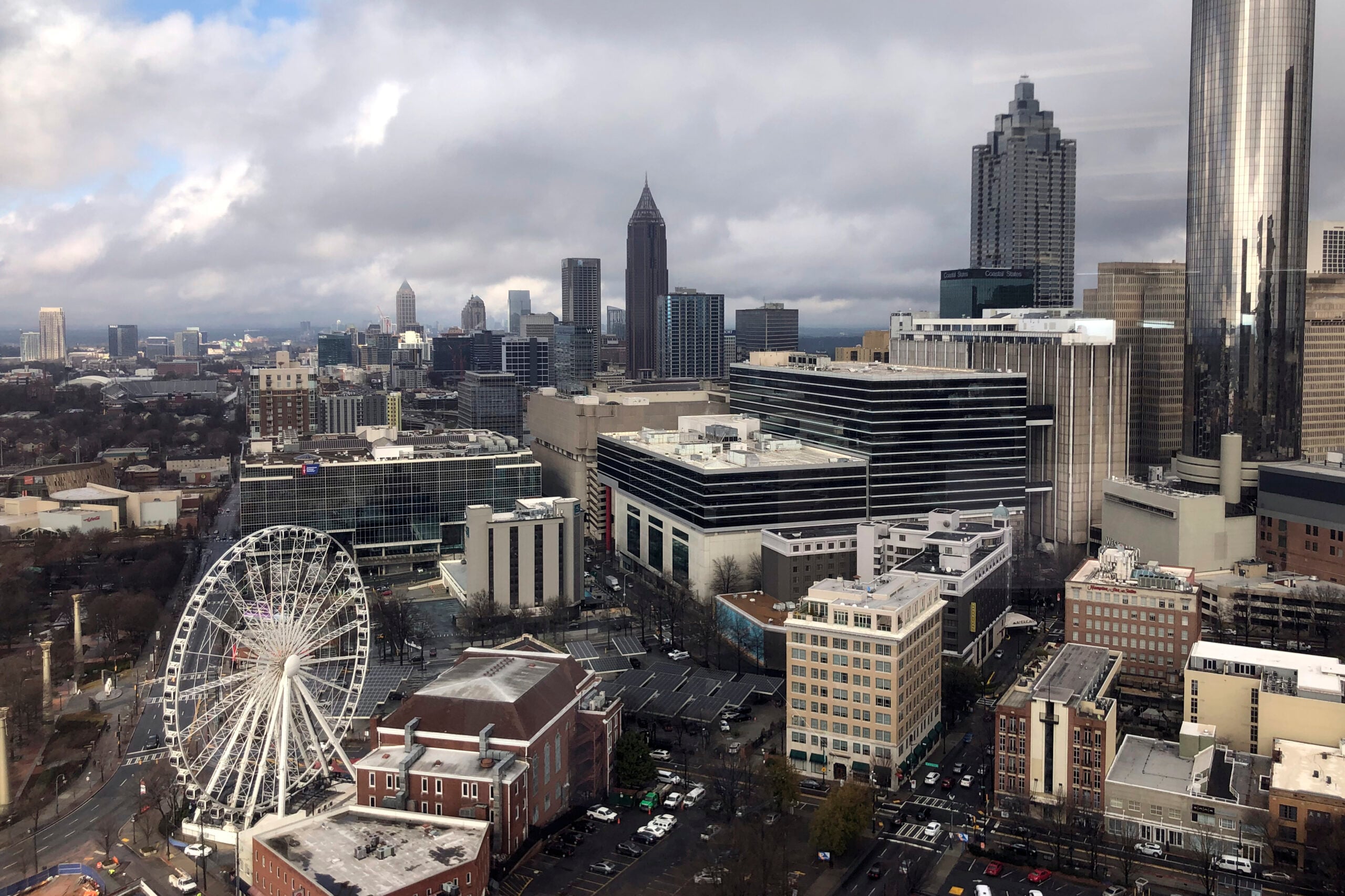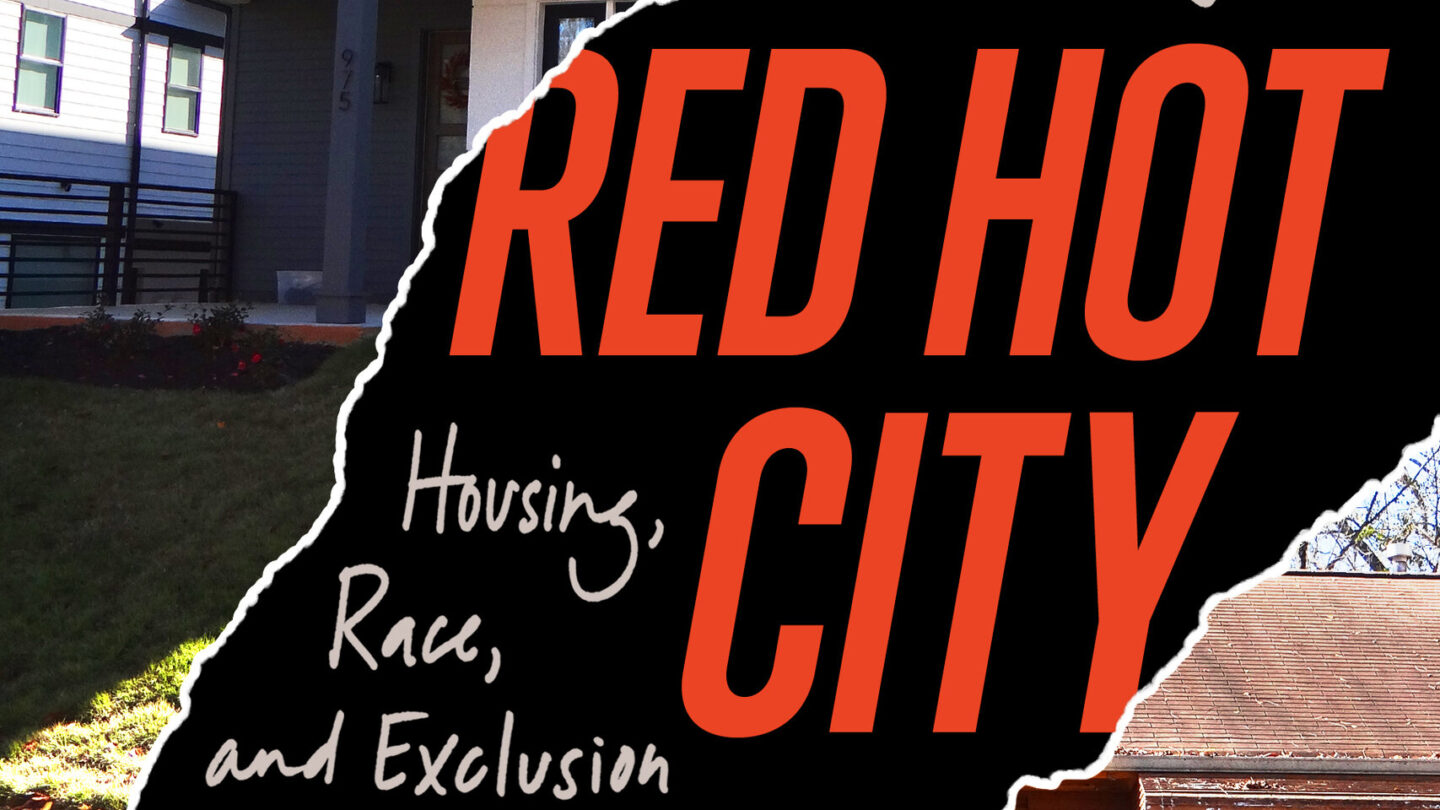New book follows roots of Atlanta’s housing crisis

Dan Immergluck, a professor of Urban Studies at Georgia State University, presents more than a decade of research into Atlanta housing issues in his new book, “Red Hot City: Housing, Race and Exclusion in Twenty-First Century Atlanta.”
Mike Stewart / Associated Press file
Metro Atlanta residents are increasingly struggling to afford housing, with rents increasing by 30 percent over two years according to Zillow and home sale prices reaching record figures during the pandemic.
A new book from a leading housing expert looks at the decisions that brought the region to this crisis point.
In “Red Hot City: Housing, Race and Exclusion in Twenty-First Century Atlanta,” Georgia State University Professor Dan Immergluck follows Atlanta’s growth, focusing on key moments, like the development of the Atlanta BeltLine, while showing how housing options for low-income residents dwindled.
It didn’t have to be this way, according to Immergluck. In an interview with WABE’s Stephannie Stokes, he explained how local leaders missed opportunities to prevent the city’s affordability issues. Excerpts of the interview edited for clarity and length are below.
You say that leaders are stuck with this 1980s mindset. Can you talk about what you mean by that?
It’s this shrinking cities mindset. The city experienced a lot of white flight in the 60s and 70s, but also white avoidance–meaning with people moving into the region as the region was growing, white people never even considered moving into the city.
And so the city lost population, and became increasingly poor, had problems of what some folks call concentrated poverty, relatively high crime rates, especially in the 80s, with the crack epidemic, and dysfunctional governance, especially over the public housing system.
The mindset was we need to attract upper income and upper middle income people into the city, and really giving no consideration about making room for lower income people.
Could local leaders have known how a project like the Atlanta BeltLine would affect low-income people?
Gentrification had already started in the city in the 90s. It picked up in the wake of the Olympics and the money spent on the Olympics. And so there were definitely signs. There was a lot of speculation around the Beltline in the early 2000s. I documented that a little bit later in 2007, with a report I did with Georgia Stand Up.
I quote a developer in the book who’s saying the Beltline is the best thing since Sherman burned Atlanta.
And then when the crash came, values plummeted everywhere, including around the Beltline. And of course, we saw this glut of vacant homes, many near the Beltline. Neighborhoods like Pittsburgh were flooded with them, neighborhoods on the west side, Grove Park. What a great time to buy those houses when they were going for $15,000 apiece. And they’re now going for $300,000 or more.
Vacancies were high, but people knew that the city was coming back. And by 2012, the apartment building cranes were going up. So you knew that this was a good time to acquire property. But there was no concerted effort to do that in a strategic way around the Beltline.

The book shows all these missed opportunities to make Atlanta a place where low income people can live. Are we at a point where it’s too late to change course?
I don’t think so. The Atlanta BeltLine is starting to acquire some property now. But the cost of that property is going to be at least 10 times what it costs when prices were very low. And that’s a huge missed opportunity. So I’m not going to say it’s too late. It’s not too late. But the longer you wait, the harder it becomes.
And now, I think it requires really focusing on one key problem that I write about in the book, which is this property tax dysfunction, this inability or refusal to tax commercial property at its real market value for fear of irritating, powerful interests. And that to me is the only way that the city is going to be able to afford the scale of affordable housing that it needs to invest in.
The city passed an ordinance designating 1% and then later 2% of the general revenue fund budget to be spent on affordable housing. But 1 or 2% of the budget of a $700 million general revenue budget is not going to do it. It needs to be on the order of $40 or $50 million a year to make a dent in the problem.
And if we don’t do that, the only housing for low income people in the city will be the kind of housing that you’ve covered, the Forest Coves, the stuff that AJC has covered, very unsafe, very uninhabitable properties. That’s all that’s going to be left. And eventually that will go away too.
What do you hope people will take away from the book?
I hope folks in Atlanta take away some commitment to fight exclusion both in the city and the suburbs, to support efforts to strengthen tenants’ rights in Georgia and Atlanta, support groups like Sandy Springs Together trying to fight expulsion and exclusion in affluent suburbs, to get involved with their local planning processes to support land use changes that will provide for more diversity, but also to support spending real dollars on affordable housing.
Red Hot City, out in October, is available for preorder.








